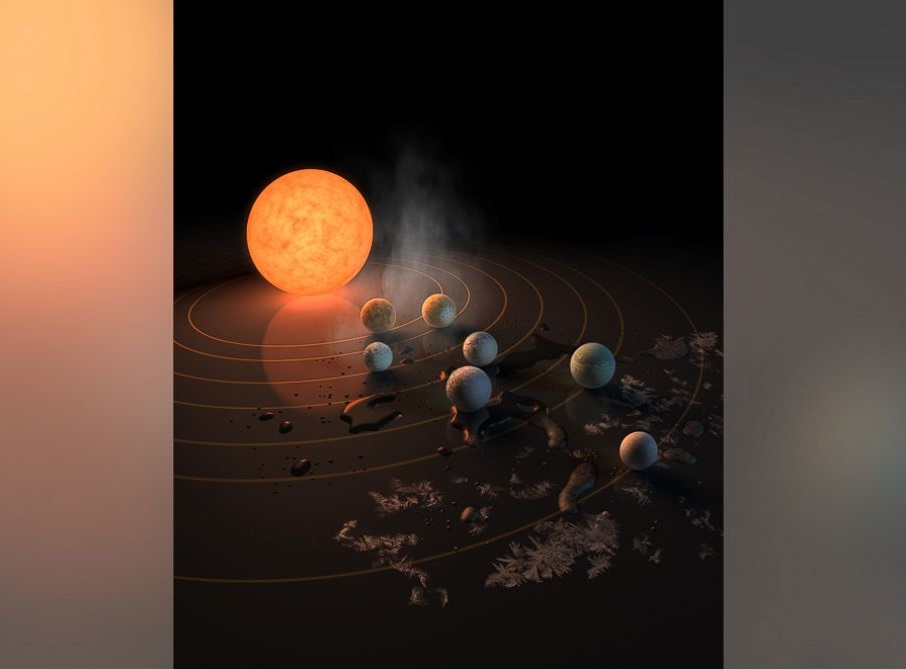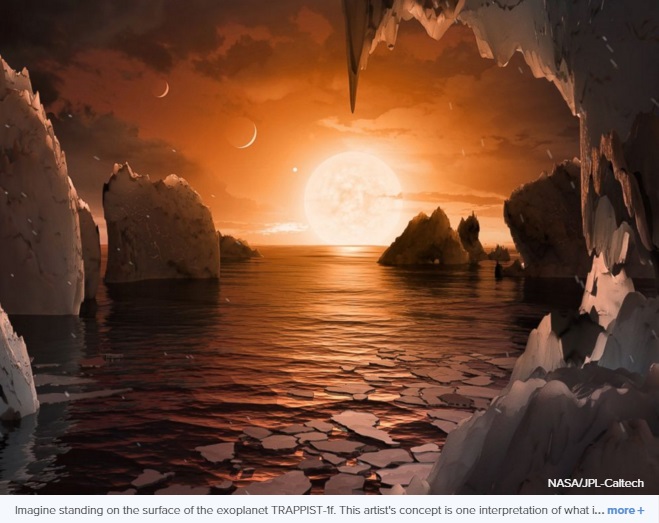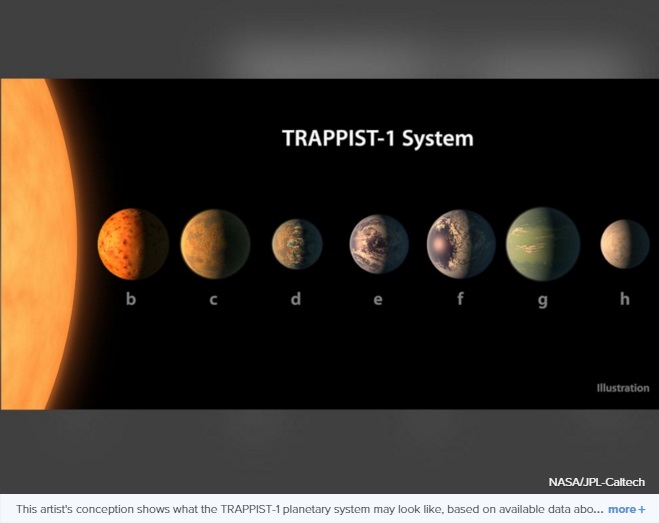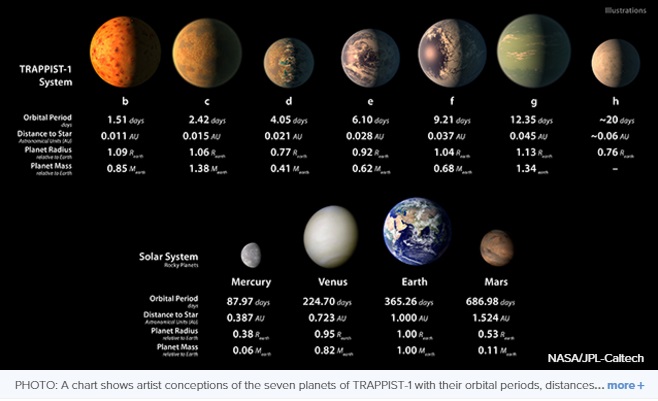
An international team of astronomers has discovered seven potentially habitable exoplanets -- or planets outside our solar system -- that could have liquid water on their surfaces, according to a paper published today in the journal Nature.
"The discovery gives us a hint that finding a second Earth is not just a matter of if, but when," Thomas Kutcher, associate administrator of the Science Mission Directorate at NASA Headquarters in Washington, said at a news conference today.
It is also a major step forward in answering the age-old question of "Are we alone out there?" Kutcher added.
Though it is unclear whether any of the newly discovered planets can harbor life, astronomers said all seven exoplanets could have liquid water -- the key to life as we know it.
The newly discovered planets have been nicknamed "Earth's seven sisters" and have masses similar to that of Earth's, in addition to having rocky compositions like our planet, scientists said.

Three of the seven planets are considered to be in the habitable zone, which is the area around a star where a rocky planet is most likely to have liquid water, researchers added.
Astronomers also pointed out that the newly discovered planetary system orbits TRAPPIST-1, a dwarf star that is much younger than our sun and that will continue to burn for another 10 trillion years -- more than 700 times longer than the universe has existed so far.
That is "arguably enough time for life to evolve," an article in Nature reported.
The star TRAPPIST-1 is about 39 light-years, or 235 trillion miles, away from Earth. It is located in the constellation Aquarius.
Astronomers noted that they are still awaiting the scheduled launch of NASA's James Webb Space Telescope in 2018 to confirm what conditions -- such as atmospheric composition and climate -- are like on the exoplanets. The James Webb Space Telescope is expected to be significantly more powerful than the Hubble Space Telescope.
The James Webb Space Telescope can detect molecules like water, methane, ozone and oxygen -- which can then help scientists determine a planet's habitability and chances of harboring life, according to Nikole Lewis, an astronomer at the Space Telescope Science Institute in Baltimore.

The discovery of the new planetary system also suggests that Earth-sized planets are much more abundant and common in the Milky Way galaxy than previously thought, researchers said.
"With this amazing system, we know there must be many more potentially life-bearing worlds out there waiting to be found," said Sara Seager, professor of planetary science and physics at the Massachusetts Institute of Technology.
The international team of astronomers that discovered the new exoplanets said they will be ramping up their efforts to locate and identify other planets around small stars in the vicinity of our sun through project Search for Habitable Planets Eclipsing Ultra-Cool Stars (SPECULOOS).

Additionally, NASA said it plans to launch the Transiting Exoplanet Survey Satellite (TESS), a space telescope that will spend two years finding planets orbiting over 200,000 of the brightest stars in the sky.
"The seven wonders of TRAPPIST-1 are the first Earth-size planets that have been found orbiting this kind of star," said Michael Gillon, lead author of the paper published in Nature and the principal investigator of the TRAPPIST exoplanet survey at the University of Liege, Belgium.
Gillon added at the NASA news conference today that the discovery of the TRAPPIST-1 planetary system is a very promising indicator for the search for life outside of Earth.

